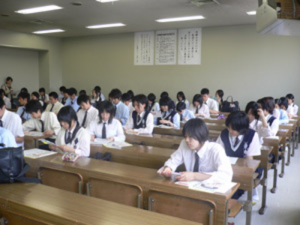The Making of Japan’s New Working Class: “Freeters” and the Progression From Middle School to the Labor Market
Introduction: The “New Working Class” of Urban Japan
 Tomo was a first-year and Keiko a third-year student at Musashino Metropolitan High School,1 a working-class high school in western Tokyo. I have known them since the early 1990’s, when I began working at their school. Two snapshots from those first years illustrate some features of family background, survival strategies, and career trajectories. These are features that they share with many working-class youth all over Japan, especially in the urban areas where public schools are more finely ranked and the labor market is larger, but also more unstable and precarious. Part I of sketches how class and culture are interrelated within the context of Japanese secondary education. Part II focuses on the ways different class groups navigate the transition from middle to high school. Part III focuses on the sorts of orientations, goals, and strategies that characterize school culture at Musashino High, a place where working-class culture takes institutionalized form through practice. The final part traces these young people’s trajectories into the bottom rungs of the service labor market and into their new status as “freeter.” (more…)
Tomo was a first-year and Keiko a third-year student at Musashino Metropolitan High School,1 a working-class high school in western Tokyo. I have known them since the early 1990’s, when I began working at their school. Two snapshots from those first years illustrate some features of family background, survival strategies, and career trajectories. These are features that they share with many working-class youth all over Japan, especially in the urban areas where public schools are more finely ranked and the labor market is larger, but also more unstable and precarious. Part I of sketches how class and culture are interrelated within the context of Japanese secondary education. Part II focuses on the ways different class groups navigate the transition from middle to high school. Part III focuses on the sorts of orientations, goals, and strategies that characterize school culture at Musashino High, a place where working-class culture takes institutionalized form through practice. The final part traces these young people’s trajectories into the bottom rungs of the service labor market and into their new status as “freeter.” (more…)